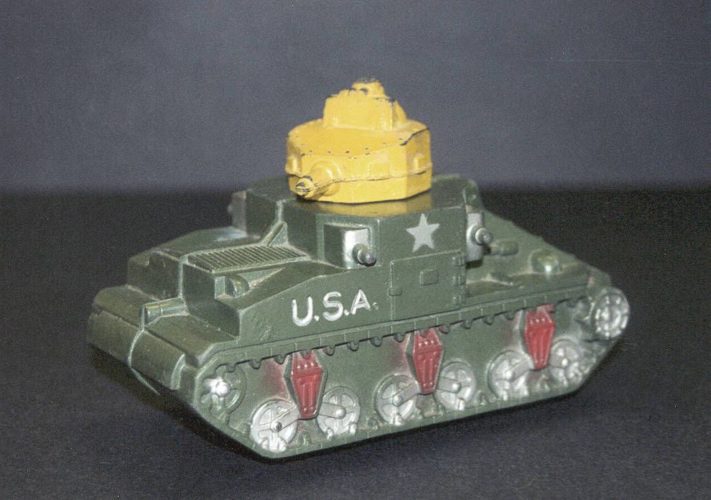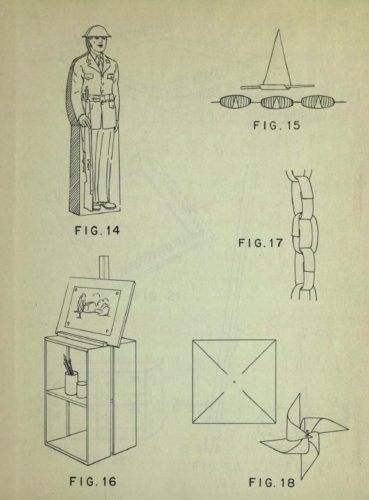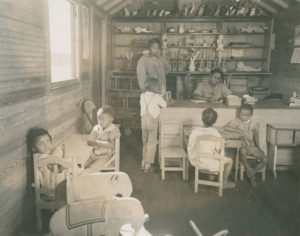Toys in Wartime

In December 1941, the attack on Pearl Harbor pulled the U.S. into World War II and brought the need for sacrifice to families across the country. The Great Depression had already required people to be resourceful, but the war brought formal restrictions on many goods. Commodities from gasoline to groceries were rationed as materials were diverted to the war effort.

President Franklin D. Roosevelt established the War Production Board (WPB) in January 1942, to oversee the conversion of factories from civilian to military production and to govern the use of “critical materials” in each U.S. industry. In March 1942, the WPB issued General Limitation Order L-81, which prohibited the production of toys that contained more than seven percent of specified critical materials including iron, steel, and rayon. Existing toys containing materials over this limit could only be sold through June 1942.
Many toy companies dedicated part or all of their production capacity to the war effort. The Lionel Corporation, famous for their electric trains, made compasses and other military items. The Sun Rubber Company, an Ohio manufacturer of rubber toys, made gas masks for civilians—including a children’s model designed to look like Mickey Mouse.
Non-metal toys such as paper dolls, puzzles, and games saw increased popularity due to their availability; Lionel even made a wartime freight train entirely out of heavy paper. Toys often had a patriotic theme, such as paper dolls with military uniforms, wooden tanks and airplanes, and puzzles with patriotic images. Battle board games were popular, and were sometimes based on actual events: Milton Bradley’s Bataan, for two players, was based on General Douglas MacArthur’s attempts to stop the Japanese invasion of the Philippines. (Similarly, German board games from the same era allowed players to invade Great Britain or shoot down Allied aircraft.)
Some toys were actually used as tools in the war. Numerous aircraft recognition games helped the 600,000 civilian members of the Aircraft Spotters Corps distinguish enemy from friendly aircraft, and View-Masters were used as training tools to help soldiers recognize enemy vehicles and artillery. On D-Day, the paratroopers of the 101st Airborne Division were issued small metal “cricket” signaling devices, originally manufactured for the toy market, to help them identify allies without exposing themselves to enemy fire.

Although commercial toys and games made of non-rationed materials were available, many children played with hand-me-down toys from older siblings or made their own toys from whatever materials were available. In 1942, the U.S. Department of Labor Children’s Bureau issued a booklet titled “Toys in Wartime” that included instructions for making everything from paint to pull-toys out of household materials.
Another option, the Toy Lending Project, started as a Works Progress Administration program in the 1930s. These centers allowed children to borrow toys and return them later, much like they would borrow library books. Some centers allowed children with good borrowing records to choose a toy to keep permanently. Although the Toy Lending Project officially ended in the early 1940s along with other WPA projects, some lending centers continued to operate under the sponsorship of local organizations.
The War Production Board restrictions remained in effect until the war’s end in 1945. As materials became available again, toy companies returned to producing toys for a new generation—the baby boomers.
Thank you to Stephanie Michaels, Research and Catalog Services Librarian at theState Library of Ohio, for this week’s post!



Leave a Reply
You must be logged in to post a comment.